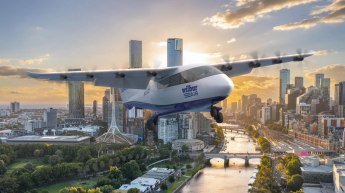As Australia prepares to welcome the first two Lockheed Martin F-35s to be based in this country, this week’s Throwback Thursday feature from the April 2017 magazine edition of Australia Aviation is about the F-35A’s appearance at the 2017 Avalon Airshow.
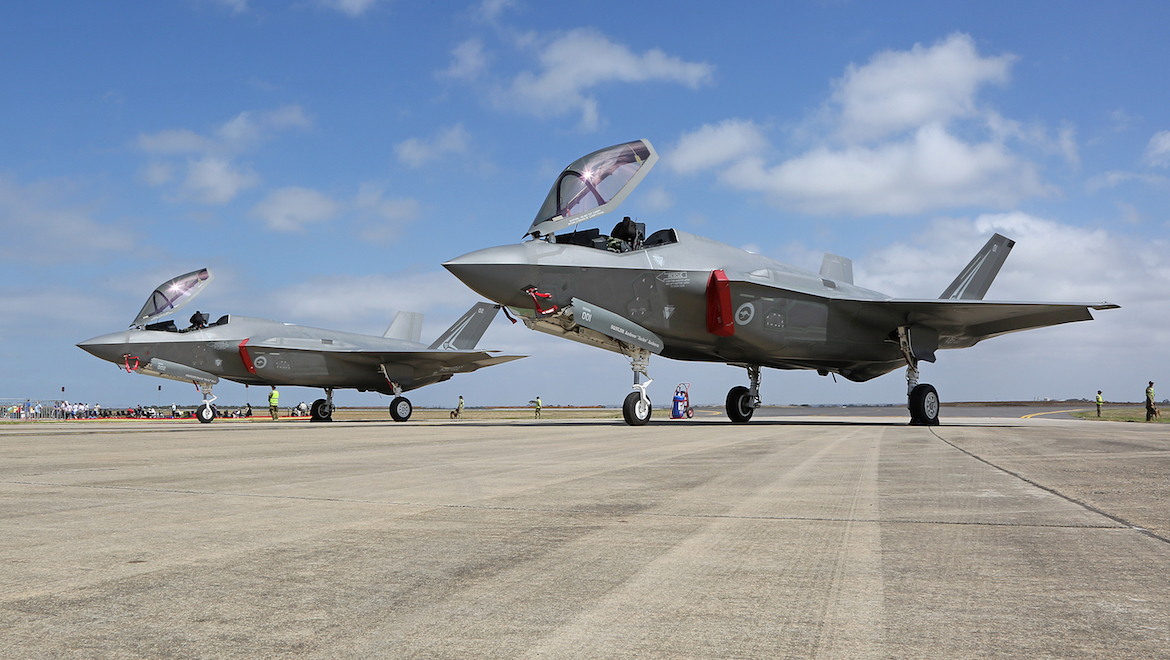
For more than a decade, Australia’s F-35s have seemed almost inconceivably far off into the future but suddenly at the Avalon Airshow on March 3 there they were, all grey low observable paint and angles.
Following a long ferry flight from the US to Amberley, aircraft A35-001 and A35‑002 loomed in the distance, flew low over the Avalon Airshow then touched down.
This was the high point of Avalon 2017 and the appreciative crowd was suitably awed, clapping politely as the two aircraft rolled to a halt.
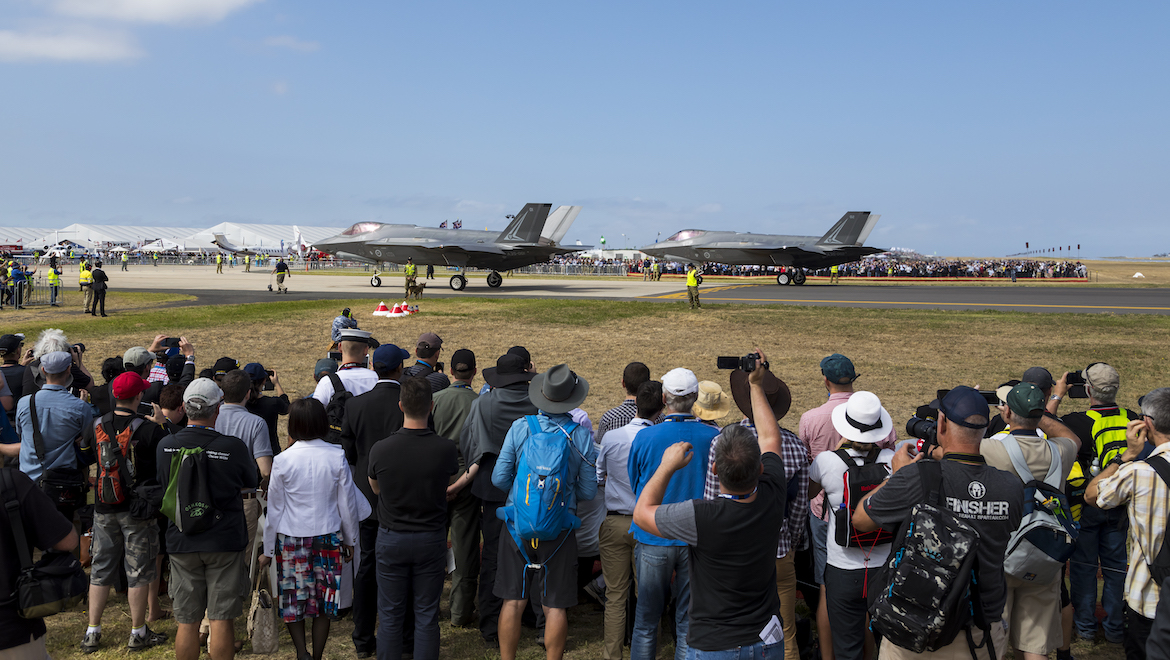

There to greet them and their pilots, Wing Commander Andrew Jackson and Squadron Leader David Bell, were the Prime Minister, Defence Minister, Defence Industry Minister, the Chief of Air Force, the chief executive of Lockheed Martin and many others.
These aircraft have been a long time coming – in June 2002, Howard government defence minister Robert Hill announced Australia would join the F-35 System Design and Development phase, with an expectation that the new aircraft would enter service in a decade, replacing F/A-18 Hornets and F-111s.
Now the RAAF is looking to IOC in December 2020, with 12 aircraft in 3 Squadron at Williamtown plus six in a training squadron. Full operating capability (FOC) with 72 aircraft is planned for the end of 2023.
There’s much good news about the F-35 but insiders freely acknowledge there is a way to go before the aircraft is fully mature.
The RAAF admitted as much in an end-of-Avalon press release when it said the two aircraft would not return to RAAF Amberley as planned on the Sunday because of thunderstorms in southern Queensland. Instead they would return the following day.
The potential for lightning to ignite fuel in F-35 tanks is well recognised and a fix has been developed but the appropriate mods haven’t yet been applied to the RAAF aircraft.
This is an issue of concurrency, where flight testing during production reveals problems which need to be retrospectively fixed on earlier aircraft.
While the two aircraft might be Australia’s, they remain within the international training pool as part of the 56th Fighter Wing at Luke Air Force Base in Arizona, with the US Air Force controlling their use and authorising their trans-Pacific trip and flights within Australia.
RAAF F-35s won’t be permanently based in Australia until late next year (2018).
Still, getting A35-001 and -002 here, even for a fleeting visit, was a major achievement, not least for the PR benefit of showing off these aircraft to a sceptical public bombarded with media reports that they cost too much and don’t work very well.
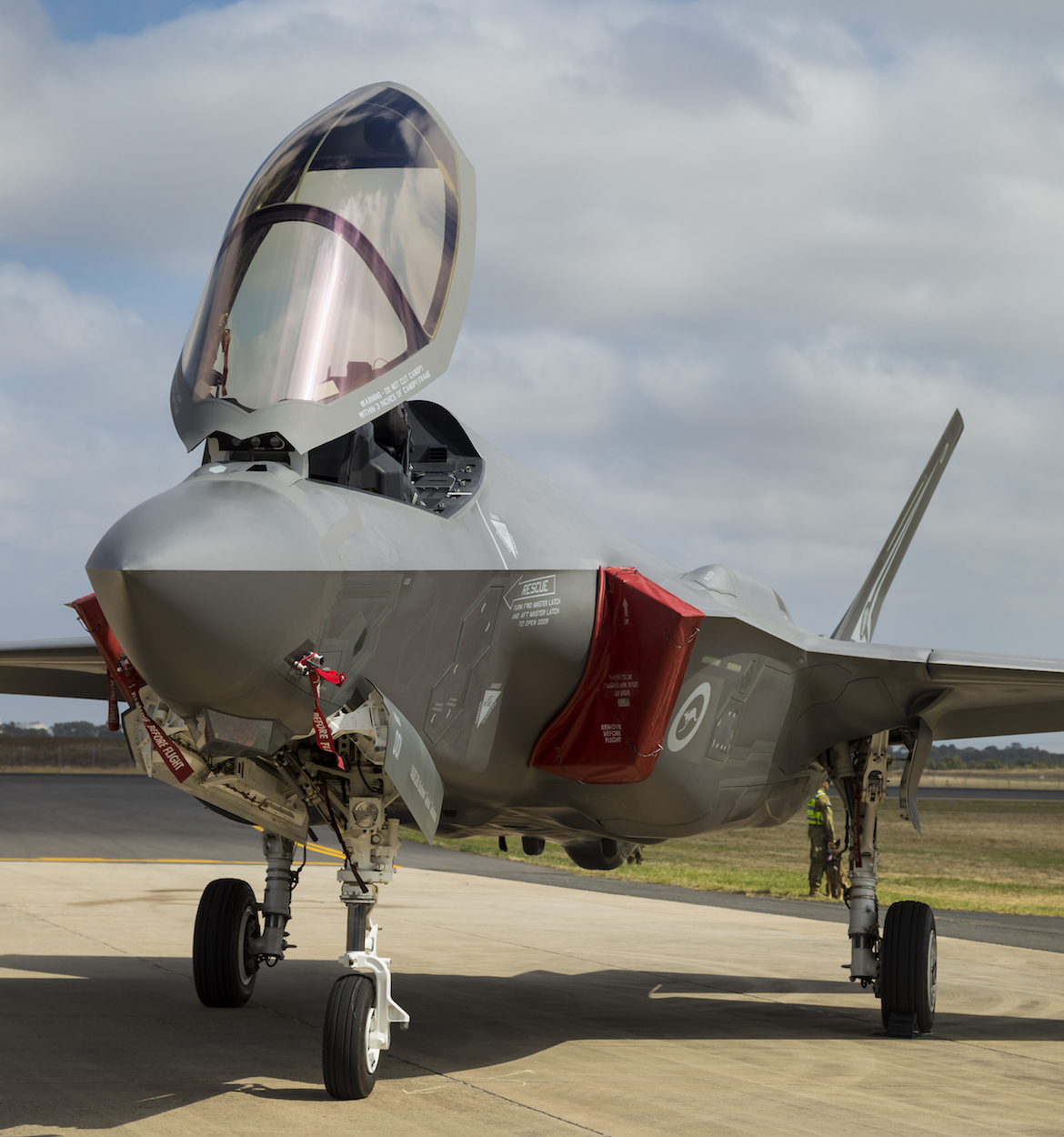
The pilots need no convincing. Both have extensive experience on Hornets and both declare F-35 a generation ahead.
“In terms of physically flying the aeroplane, it actually flies fairly similarly to a legacy Hornet. In terms of operating the aeroplane, there’s a real difference,” WGCDR Jackson said at Avalon.
“JSF has the sensor fusion which gives you a complete picture, so less time is spent by the pilot having to look at the various different sources of information and put them together. We spend a lot of time operating away from other aircraft in a network. You can use those things to have a good tactical outcome. You spend a lot more time getting the picture and working out how to use that.”
WGCDR Jackson said core skills of flying a Hornet transferred readily to F-35.
“The application is slightly different. I wouldn’t say there are new skills but maybe the emphasis changes a little bit. The way you operate the aeroplane is quite different. The tactical decision-making that goes along with that takes some time.”
SQNLDR Bell says flying F-35 on a normal mission conducting long-range intercepts of other aircraft, pulling 3-5G, was relatively benign.
“If you are doing very innovative intercepts and get very close to other aircraft, you might do some dogfighting and then we would be using up to about 7G.”
Crossing the Pacific, the pilots hopped from Arizona to Hawaii to Guam to Amberley, refuelling from a RAAF KC-30 about every 20-30 minutes on longer legs of up to eight hours.
“For the rest of the time we just enjoyed the view,” WGCDR Jackson said.

For the RAAF, this was obviously good practice as all 72 aircraft will eventually make this long trans-Pacific ferry flight.
With the F-35 the main event of Avalon, there were a series of top-level briefings.
For the RAAF, one of the most pertinent came from Brigadier General Scott Pleus, director of the USAF F-35 integration office. He’s the former commander of the USAF 56th Fighter Wing at Luke, a former F-16 driver with 2,000 hours including combat experience. He’s now a qualified F-35 instructor pilot who’s flown both the RAAF aircraft.
USAF experience is most relevant to the RAAF as both will be operating the F-35A, the conventional takeoff and landing variant.
“The jet itself is lethal. It is lethal and it is survivable and it is head and shoulders above any legacy fourth‑generation fighter,” he said.
“Even though we are still in the development stages of the F-35 program, we have the jets finally in the hands of experienced fighter pilots from all over the world and they have proven time and time again that the F-35A is a formidable weapon, one that should be feared by all our adversaries.”
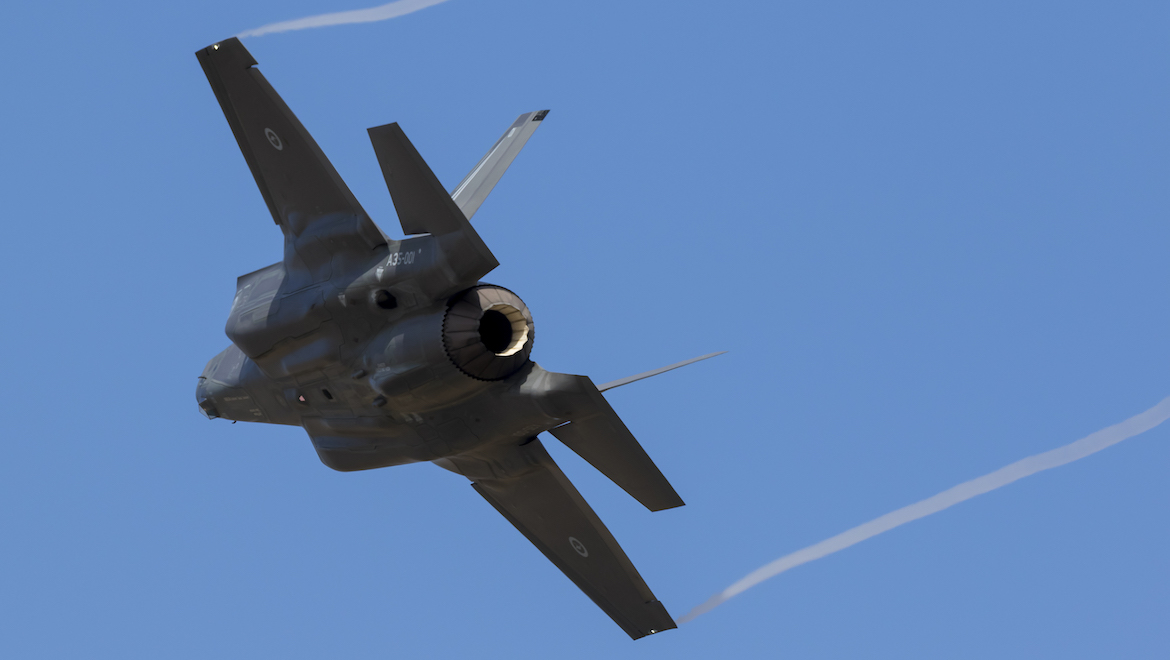
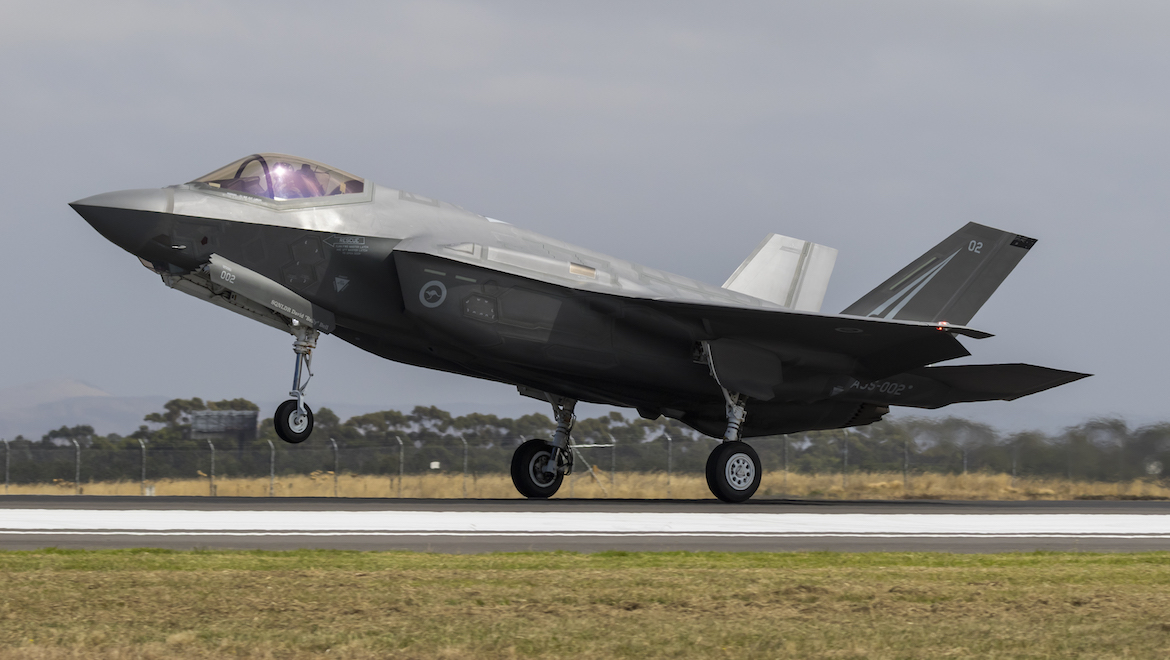
Pleus says that stems from F-35’s state-of-the-art sensor fusion, low observable technology, advanced electronic attack and protection and shared situational awareness.
He said fighter pilots were an interesting breed who would always give the unvarnished truth as they were the ones who would fly into harm’s way.
“We are the ones who are flying the airplanes. We are the ones who are the experts. Everybody else is just making supposition,” he said.
“To date we have amassed more than 73,000 flight hours and this jet is just getting better and better as we continue to operationalise it.”
In January, USAF F-35s participated for the first time in the Red Flag exercise at Nellis Air Force Base, Nevada, achieving a 90 per cent mission capable rate, with F-35s flying 207 of 226 planned sorties. The other 19 were cancelled because of weather which shut down the Red Flag ranges. Brig Pleus said that was an “unbelievable metric”, well in excess of legacy aircraft.
F-35s hit 49 of 51 SAM sites and the two misses stemmed from weapons failures. Further, F-35s achieved a better than 20-1 kill ratio. As exercise results are processed, the kill ratio could turn out to be even higher.
“The pilots I spoke with from Hill Air Force Base just last week had nothing but praise for the F-35,” he said.
“They were able to penetrate heavily defended airspace, suppress enemy defences, take out the enemy air defence. But more importantly, they made the fourth-generation fighters more lethal.
“F-16s, F-15Es, F-15Cs were all able to up their shot-kill ratio, their ability to hit the target without being targeted by the surface-to-air threat. The entire Red Flag experience was brought up by the inclusion of fifth-generation airplanes.”
Pleus said the F-35 had never before been fully integrated into a mission package to penetrate the highest threat density ever produced at Red Flag.
Using its advanced sensors, sensor fusion and data distribution, the F-35 was able to provide top cover for the legacy aircraft, supplying them with target and threat data.
“That fourth to fifth-generation is actually a game changer in and of itself. You don’t have to have just fifth‑generation fighters – fourth‑generation airplanes are still going to be important to our Air Force as well as the Royal Australian Air Force,” he said.
“This airplane is absolutely combat ready to do whatever we need it to do.”

In July, the first batch of newly qualified pilots will transition from F-35 initial training to the USAF’s first operational F-35 squadron, 34th Fighter Squadron at Hill Air Force Base, Utah.
They could soon be in combat. The USAF plans to deliberately season F-35 with a deployment to an overseas theatre where they will operate alongside ally air forces later this year.
Timing and location hasn’t been decided but Brig Pleus says it could be the Middle East, Europe or Asia and could involve combat operations.
Like the USAF, the US Marine Corps has found the presence of F-35 – in its case the short takeoff and vertical landing F-35B variant – makes legacy aircraft perform better.
USMC Lieutenant General John ‘Dog’ Davis, the Marines’ top aviator, says in F-35 they had a real winner.
In earlier pre-F-35 exercises with older aircraft, the Marine flyers got their butts kicked, losing half their aircraft (simulated) without hitting the target, the general admitted.
In the recent Marine Division Tactics Course eight friendlies including four F-35Bs faced 20 ‘enemy’ aircraft, achieving a kill ratio calculated at 24-0.
“It was a very good day for the eight. A very bad day for the 20,” he said at Avalon.
“We are not losing F-35s at all and we set the conditions for everybody else to be successful. It’s a vastly different airplane.
“It’s a very high quality, maybe the best high-quality fighter we have available to us in respect of being a killing machine. It’s a fighter, it’s an attack airplane, an exceptional attack airplane, it’s also an electronic warfare airplane.”
In that Marine Division Tactics Course the top scoring Marine pilot turned out to be a young student from a training squadron with only some 50‑60 hours on F-35B.
That adds weight to earlier assertions that those set to really excel on F-35 will come from the computer gaming generation, not the ranks of veteran pilots.
“The new guys, the new gals will be the ones to take this airplane to the next level,” Lt Gen Davis said.

For all the pluses for F-35, there are some minuses, as US Air Force Lieutenant General Chris Bogdan, head of the F-35 Joint Program Office in the Pentagon, readily admits.
There remain concurrency issues. The F-35’s Autonomic Logistics Information System (ALIS), which links each aircraft’s onboard systems to the global logistics system, remains very much a work in progress.
The aircraft itself doesn’t yet possess the full range of capabilities, which should be delivered when the software is updated from Block 3i (interim) to 3F (final).
Right now 3i only allows F-35 to carry two AIM-120 AMRAAM and either two GBU-12 laser-guided bombs or two JDAMs.
The Pentagon’s Operational Test and Evaluation (OTE) office, which maintains an uncompromising watch on F-35 progress, says 3i has hundreds of deficiencies and 3F, now scheduled to be rolled out early next year, has required multiple corrections.
It’s likely to be late and OTE says achieving full F-35 combat capability is at substantial risk.
In its report last August, OTE said unresolved 3i deficiencies produced ambiguous threat displays and limited ability to respond to threats and in some cases required offboard sources to provide accurate coordinates for precision attack.
The full range of planned 3F enhancements remain classified. But it will allow use of the aircraft’s gun and should open the way for an abundance of weapons, such as eight GBU-53 small diameter bombs carried internally, AIM-9X plus a stand-off missile such as the Kongsberg JSM or the Turkish Roketsan SOM-J.
The RAAF says its schedule for IOC and FOC provides a comfortable buffer against schedule slippage.
Air Vice-Marshal Leigh Gordon, head of the JSF division in the Capability Acquisition and Sustainment Group (CASG), said since the government approved acquisition of the balance of the 72 planned aircraft in April 2014, there had not been a delay or cost increase.
Right now, four RAAF pilots have trained on the F-35 with a fifth to start soon. The first 25 RAAF maintainers are now in ground school training in the US, before moving to Luke for hands-on training.
Australia’s next six aircraft are now in production in low rate initial production (LRIP) lot 10.
“There is certainly risk in the program. We are managing that risk, confronting the issues head-on. But certainly at this stage I am quite confident to predict we will achieve IOC in December 2020,” AVM Gordon said.
Some further good news is that aircraft are getting cheaper.
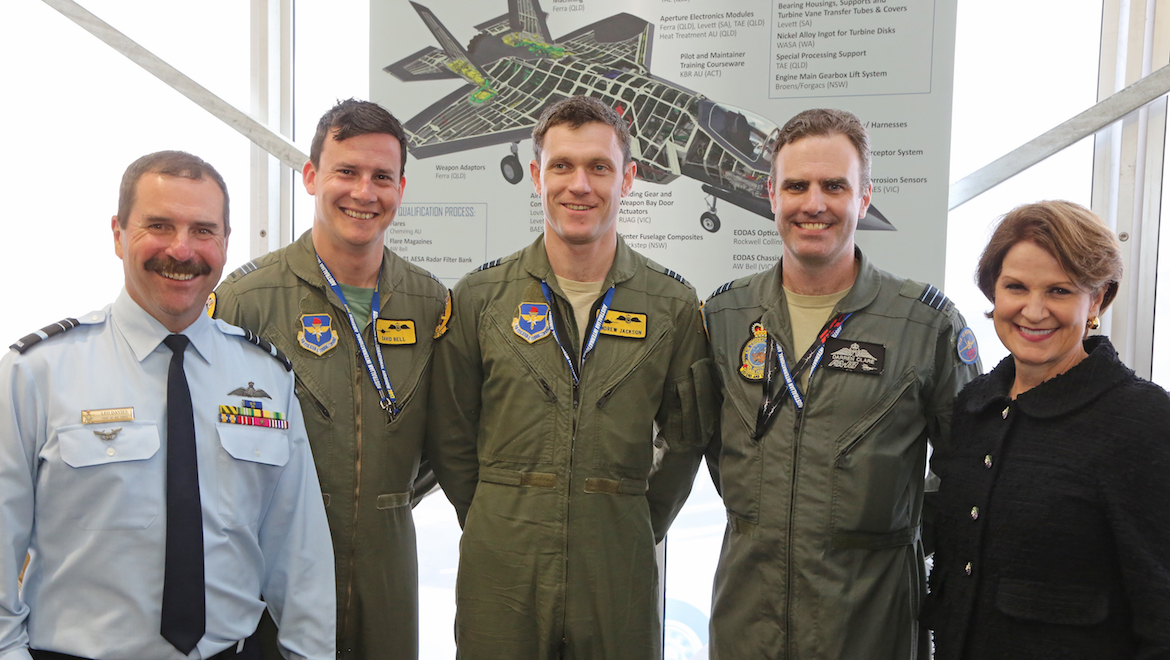
US Air Force Lieutenant General Chris Bogdan, head of the F-35 Joint Program Office in the Pentagon, said the F-35A unit price in LRIP-10 was US$94.6 million, while the JPO had consistently promised that an F-35A purchased in 2019 would be less than US$85 million.
“That is not enough. We need the airplane to be lower in price in 2019 and 2020 than US$85 million and I think we can get there,” he said at Avalon.
“We ought to be looking at about an US$80 million airplane by that timeframe and then continuing to reduce the price of the airplane lot over lot over lot.”
Putting that in perspective, Australia’s first two aircraft, produced in LRIP-6, each cost more than US$120 million.
Lockheed Martin sells an F-16 for US$60-65 million while a Super Hornet costs around US$70 million.
Bogdan says cost decreases came through manufacturing efficiencies as more aircraft are produced in each annual production lot. LRIP-9, negotiated in 2015, was for 60 aircraft, while lots from 2020 will be for 160 aircraft.
There’s also potential for a block buy – combining three lots so primes can negotiate the best possible prices from suppliers.
So how low can they go? Bogdan suggests not much under US$80 million as the period of peak production efficiency coincides with the planned modernisation program.
“Those two things are in conflict with each other,” he said.
With the F-35 program on a roll and costs falling, might not now be a good time for Australia to commit to the remaining 28 aircraft, making a fleet of 100?
RAAF chief Air Marshal Leo Davies said the original plan was for Defence to go to the government about extra aircraft in the early 2020s.
But F-35 might be a very different aeroplane by then.
“I’d like to wait so we can see what sort of a window of opportunity that presents for us so we can give a real option to government. So I think the timeline at the moment is about right,” he said.
VIDEO: A look at the two Royal Australian Air Force F-35As at the 2017 Avalon Airshow from the RAAF YouTube channel.
This article originally appeared in the November 2018 magazine edition of Australian Aviation. To read more stories like this, subscribe here.




